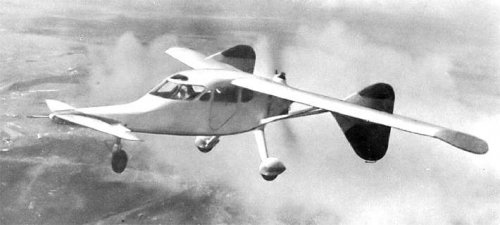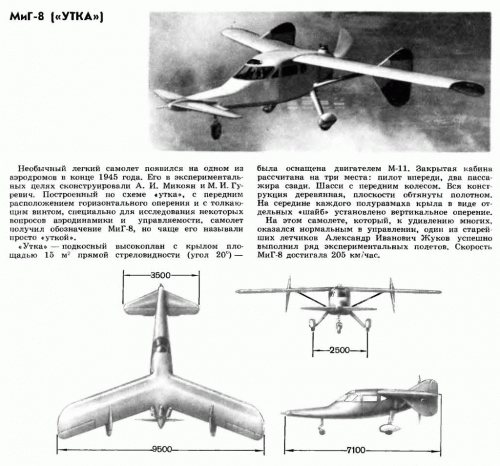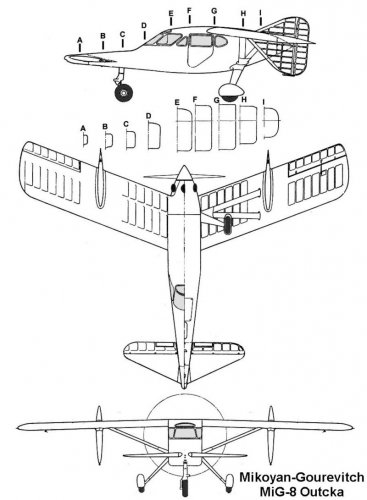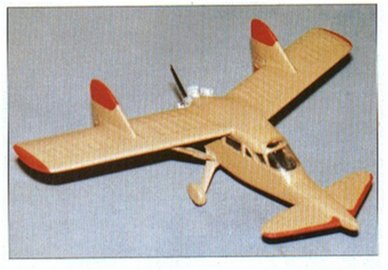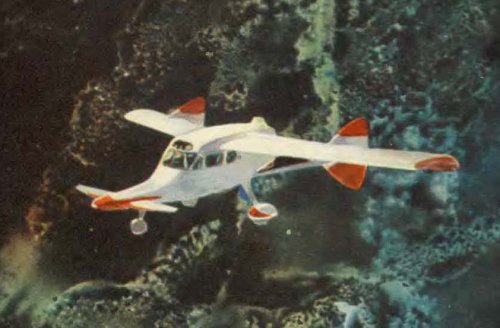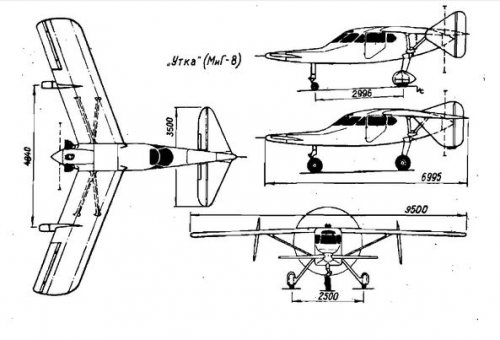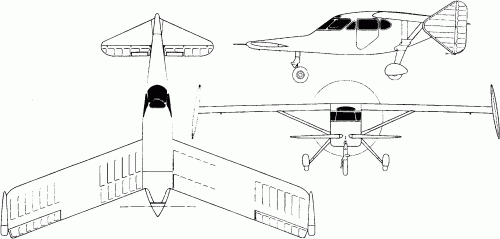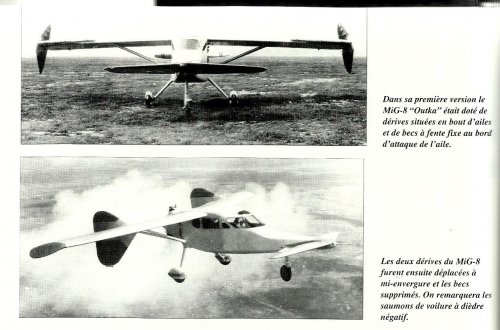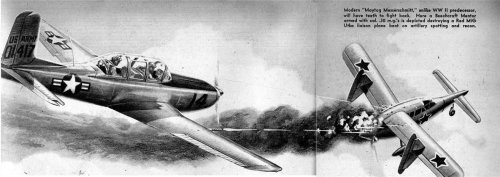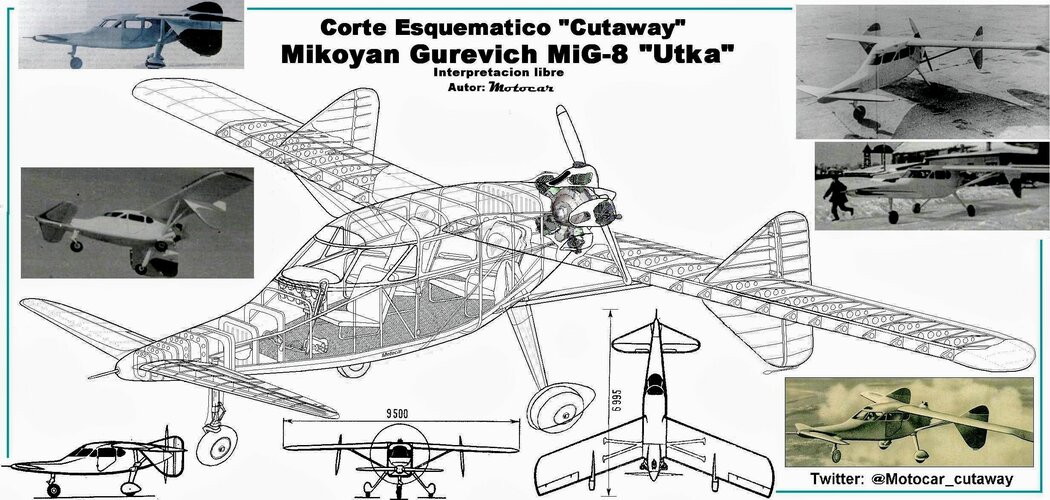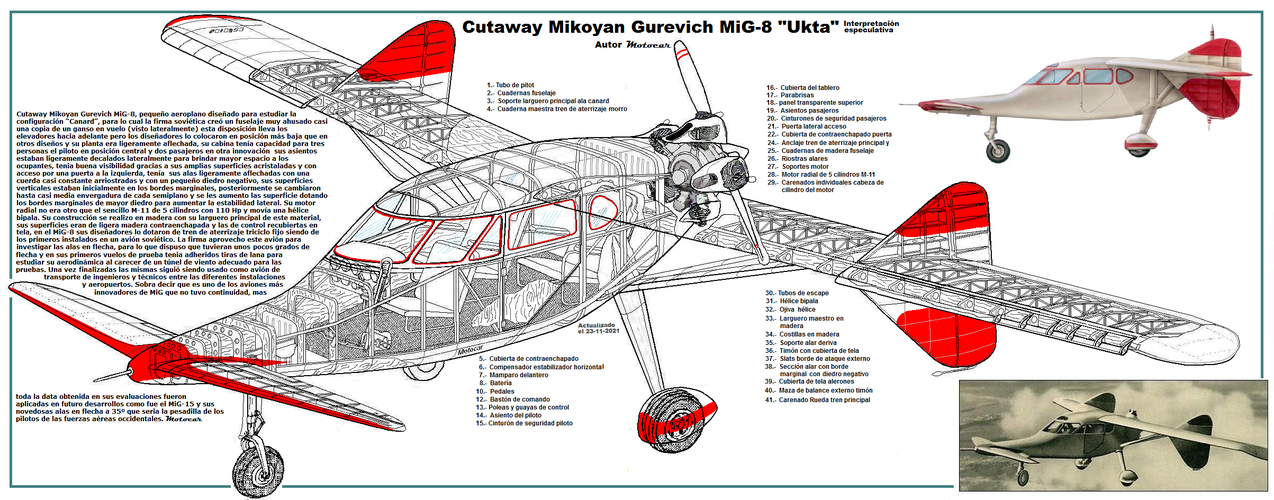- Joined
- 25 June 2009
- Messages
- 14,141
- Reaction score
- 4,332
The Mikoyan-Gurevich MiG-8 Utka was a Soviet experimental aircraft. The aircraft was designed and built in 1945 to test the novel canard configuration, and in particular the stability and handling of the canard configuration in conjunction with swept wings. The name Utka was a direct translation of the French word "canard" ("duck").
The canard configuration has benefits in a jet-powered aircraft as it leaves the rear of the fuselage clear of interference from the jet's exhausts. To test the concept the MiG-8 was powered by a Shvetsov M-11 five-cylinder radial engine, with a pusher propeller. It also used a tricycle undercarriage, the first used by the design bureau (OKB).
The Utka was modified to test a variety of configurations; it was used notably as a testbed in developing the swept wing of the MiG-15. It was then used as a liaison/utility aircraft for many years by the MiG design bureau. Being made of wood and fabric, it was very light and reportedly a favorite among MiG OKB test pilots for its docile, slow-speed handling characteristics.
General characteristics
Crew: 1
Capacity: 2
Length: 6.995 m (22 ft 11 in)
Wingspan: 9.5 m (31 ft 2 in)
Wing area: 15 m2 (160 sq ft)
Airfoil: Clark YH
Empty weight: 642 kg (1,415 lb)
Gross weight: 1,150 kg (2,535 lb)
Fuel capacity: 195 litres (43 imp gal; 52 US gal)
Powerplant: 1 × de-rated Shvetsov M-11FM five cylinder air-cooled radial engine, 82 kW (110 hp)
Propellers: 2-bladed, 2.36 m (7 ft 9 in) diameter
Performance
Maximum speed: 205 km/h (127 mph; 111 kn)
Range: 500 km (311 mi; 270 nmi)
[Data from Gunston, The Osprey Encyclopaedia of Russian Aircraft 1875–1995, p. 184]
Adapted from the Wikipedia article.
The canard configuration has benefits in a jet-powered aircraft as it leaves the rear of the fuselage clear of interference from the jet's exhausts. To test the concept the MiG-8 was powered by a Shvetsov M-11 five-cylinder radial engine, with a pusher propeller. It also used a tricycle undercarriage, the first used by the design bureau (OKB).
The Utka was modified to test a variety of configurations; it was used notably as a testbed in developing the swept wing of the MiG-15. It was then used as a liaison/utility aircraft for many years by the MiG design bureau. Being made of wood and fabric, it was very light and reportedly a favorite among MiG OKB test pilots for its docile, slow-speed handling characteristics.
General characteristics
Crew: 1
Capacity: 2
Length: 6.995 m (22 ft 11 in)
Wingspan: 9.5 m (31 ft 2 in)
Wing area: 15 m2 (160 sq ft)
Airfoil: Clark YH
Empty weight: 642 kg (1,415 lb)
Gross weight: 1,150 kg (2,535 lb)
Fuel capacity: 195 litres (43 imp gal; 52 US gal)
Powerplant: 1 × de-rated Shvetsov M-11FM five cylinder air-cooled radial engine, 82 kW (110 hp)
Propellers: 2-bladed, 2.36 m (7 ft 9 in) diameter
Performance
Maximum speed: 205 km/h (127 mph; 111 kn)
Range: 500 km (311 mi; 270 nmi)
[Data from Gunston, The Osprey Encyclopaedia of Russian Aircraft 1875–1995, p. 184]
Adapted from the Wikipedia article.

